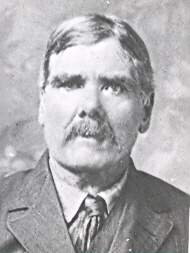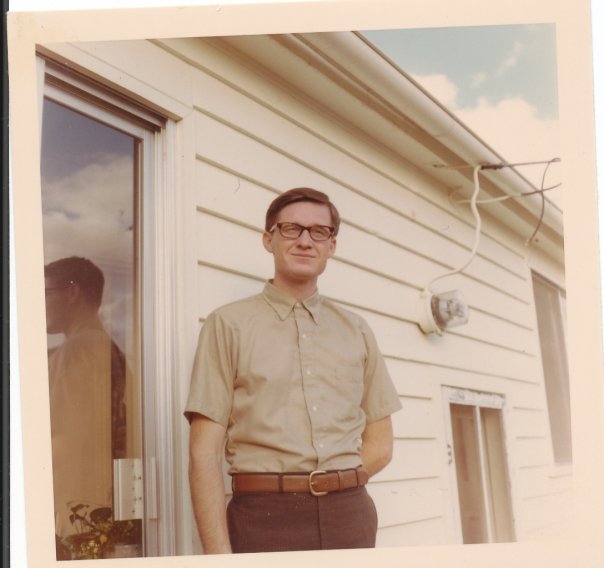Author: Nate Oman
-

-
Reading Nephi Reading Isaiah at BYU
This looks like the sort of conference that makes me sad at times that I don’t live in Utah:
-

What My Father Did
A few weeks ago my father retired after spending three decades working for the Church Historical Department. I’m no doubt guilty of an excess of filial piety, but I think that the Church and Kingdom are better for the work that he did.
-
A New Book for the Mormon Canon
There are a number of Mormon pamphlets and books that have achieved a kind of semi-canonical status within Mormon studies. Everyone agrees, for example, that Parley P. Pratt’s Key to the Science of Theology or John Taylor’s Mediation and Atonement are key texts for understanding nineteenth Mormon thought. If any evidence is needed, both texts,…
-
A Mormon History Bleg
Do you know of any good source dealing with Mormon attitudes toward and/or involvement in the Spanish-American War? Please give me your ideas in the comments. Thanks!
-
Getting over Nibley
Of late I have been thinking of late about how to read Mormon scriptures. In particular, I have been working on some passages in the Book of Mormon on legal interpretation and thinking about how best to approach these sections. By and large, it seems to me that there have been three basic models of how to…
-
Michael Scott and C.S. Lewis
While I don’t really have a television, there are a couple of shows that I regularlly watch through Netflix or hulu.com. Among them is The Office. I actually think that some of C.S. Lewis’s thoughts on the nature of love help to make sense of Michael Scott.
-
Commentary on 1 Ne. 17, concluded
Continuing part 1 , part 2, and part 3. Nephi’s response to his brothers directly attacks their understanding of Moses’s significance.
-
Commentary on 1 Nephi 17, pt. 3
Continuing part 1 and part 2. Laman and Lemuel offer up their gloss on the story of Moses in verse 22 and in so doing model a particular type of scriptural and legal interpretation. They say: And we know that the people who were in the land of Jerusalem were a righteous people; for they…
-
Commentary on 1 Nephi 17, pt. 2
Laman and Lemuel make their appearance in chapter 17 in verse 17, where they say:
-
Regarding Carol Lynn Pearson
Over the holidays I discovered the poetry of Carol Lynn Pearson, which I have been enjoying. At times she spills over into the trite or saccharine, but on the whole I like it. There is nothing agonistic about it, which is the reason that Terryl Givens doesn’t much care for it. I think that he’s…
-
Commentary on 1 Nephi 17, pt. 1
This is the first of a series of posts in which I will be offering some commentary on 1 Nephi 17. Why that particular chapter you ask? The answer is that I believe that chapter 17 is setting forth a method of scriptural interpretation that proved to be very important both for the Book of…
-
Nature and Cities
I often find walking in nature a spiritual experience, for want of a better term. Growing up, I think that I found my testimony in part by tramping through the Wasatch Mountains and watching thunder storms roll across the Great Salt Lake. Today, I am likely to have real moments of reverence and gratitude to…
-
Past and Present
It’s an intellectual banality to point out that how one thinks of the present structures how one thinks about the past. The cliché, however, is useful when thinking about Mormon history.
-
Why Conservatives Should Support Same-Sex Marriage Legislation
Rod Dreher, I think, has a it right. Conservatives ought to support same-sex marriage legislation.
-
The Canonization of the Book of Mormon?
Penguin Books has just published a “Penguin Classics” edition of the Book of Mormon edited by Laurie F. Maffly-Kipp. Penguin Classics, of course, are the paperback editions of literary staples like Jane Austen or Charles Dickens. They are printed and marketed largely as texts for college classes. The assumption is that a text included in…
-
2009 LDS Law Students Conference at Harvard Law School
The J. Reuben Clark Society’s annual student conference will be held this year at Harvard Law School in Cambridge, Massachusetts. Registration is now open, and I urge LDS students, lawyers, and interested laypersons to attend. FYI.
-
An Open Letter to Michelle Obama
Dear Michelle, First, let me say how much I’ve enjoyed getting to know you over the last couple of months.
-
The Difficulty of Theological Interpretations of Mormon History
Providing a theological interpretation of Mormon history is tricky. I’ve argued elsewhere that one of the reasons that Mormons care so much about history is that in some sense they regard it has having a normative force. Part of how we understand God’s will is by offering an interpretation of our past that sees in…
-
BYU in the Memory of the AAUP
Among the other academic spam that I get are regular emails from the American Association of University Professors (AAUP), which is always eager to remind me of their fights for academic freedom, higher salaries for professors, and various trendy and hip progressive causes. Today, the AAUP sent out an email commemorating the ten year anniversary…
-
Evil Speaking
In the Old Testament God likens his relationship to the House of Israel as that of a bridegroom to his wife. In the New Testament, the Church is described as the bride of Christ. The choice of the image of marriage, it seems to me, is hardly accidental. It provides, I think, the background for…
-
My Williamsburg Discrimination Story
Adam’s post about the California Supreme Court’s recent decision, and the resulting brawl in the comments got me thinking about the basis of discrimination. In 1998, while I was a senior at BYU I spent a semester in Williamsburg, Virginia doing research in the archives at the College of William and Mary. The week before…
-
Reading Psalm 137 as a Microcosm of Discipleship
Psalm 137 is one of those wonderful and paradoxical passages of scripture that contains within itself a universe.
-
FTA: Dating, Jane Austen, and the Virtues of Chastity
Like most rugged and red-blooded American men I have long enjoyed the work of Jane Austen.
-
Korihor and the United States Reports
Let’s read the Book of Mormon as a commentary on American constitutional law and vice versa. Alma 30:7-10 reads:
-
Searching for a Sense of Place in Viriginia (a bleg)
I am at a stage in life when I think a lot about place. After a decade or so of moving every 1 to 3 years, our family has arrived on the banks of the James and there is a very good chance that this is where my children will grow up. My interest in…
-
The Oddity of God’s Promises
I basically pay my mortgage by thinking about contracts and promises. It is a tough job, but someone has to do. Of late, I’ve gotten to thinking about God’s promising. Consider these two quotes:
